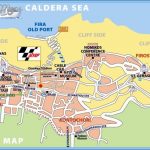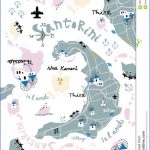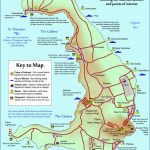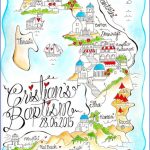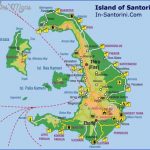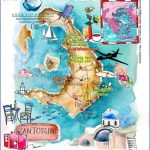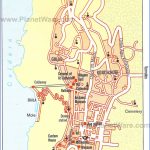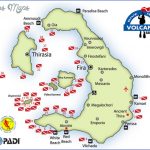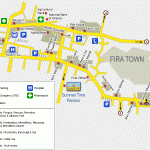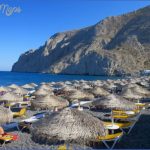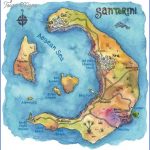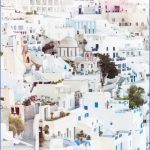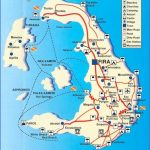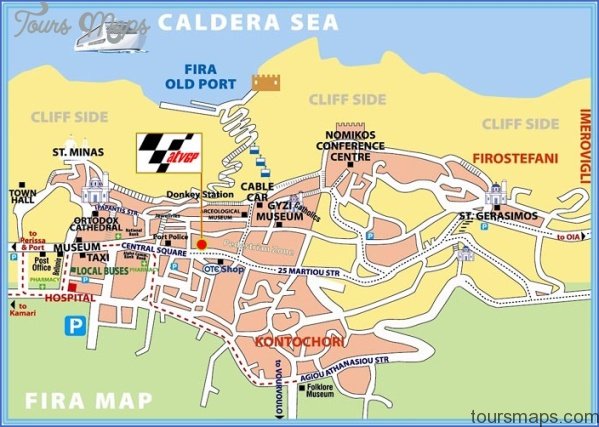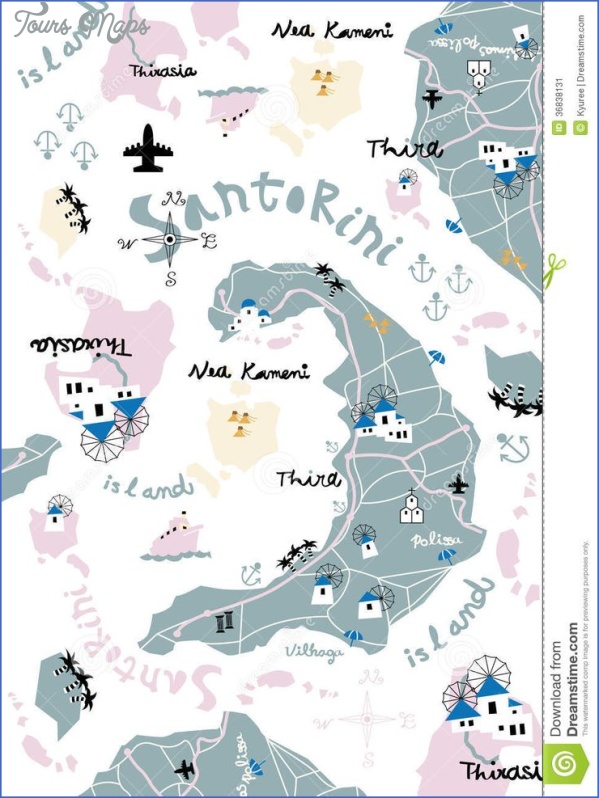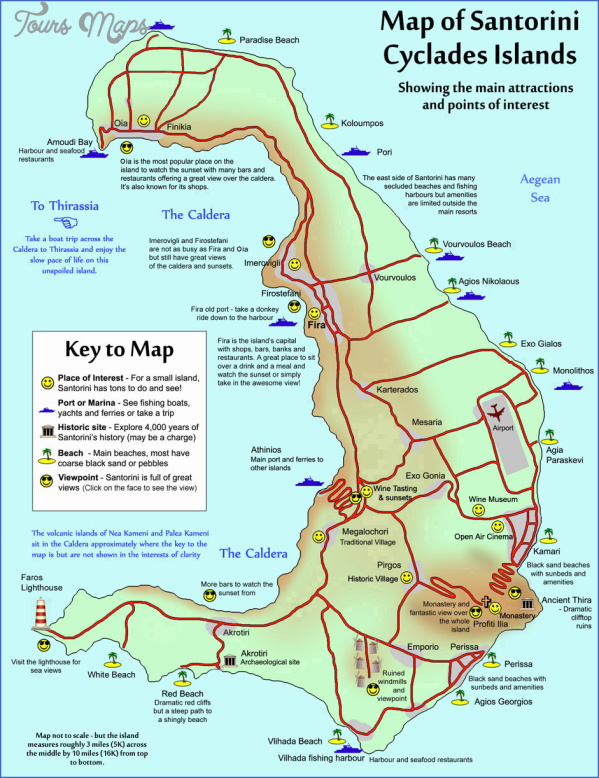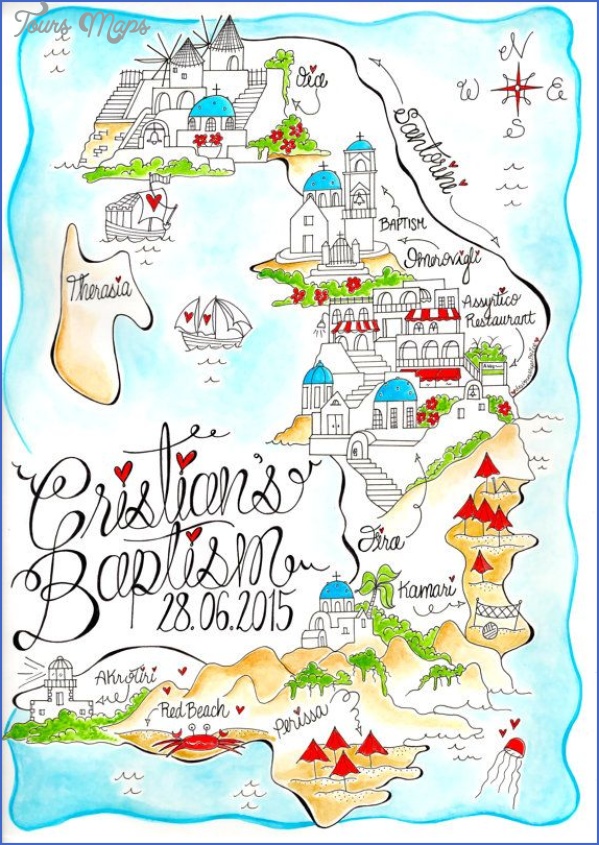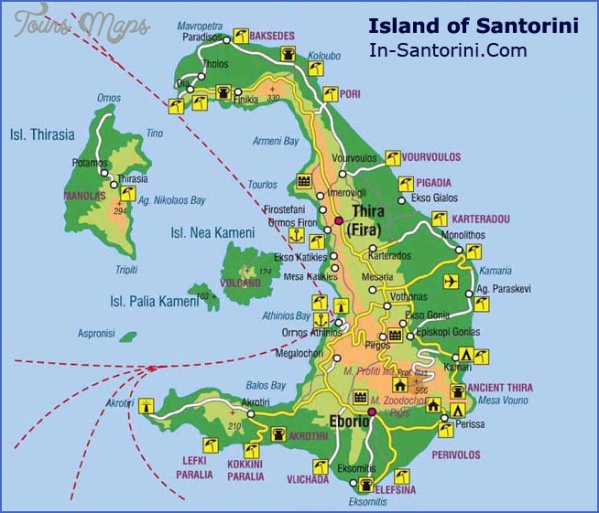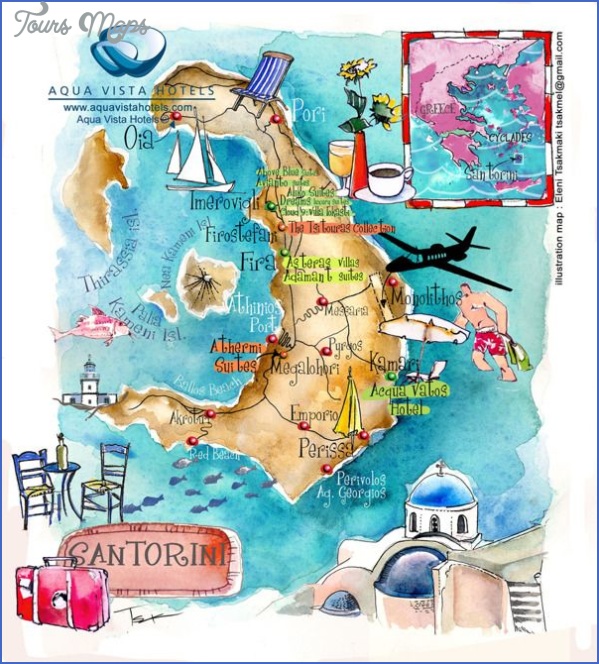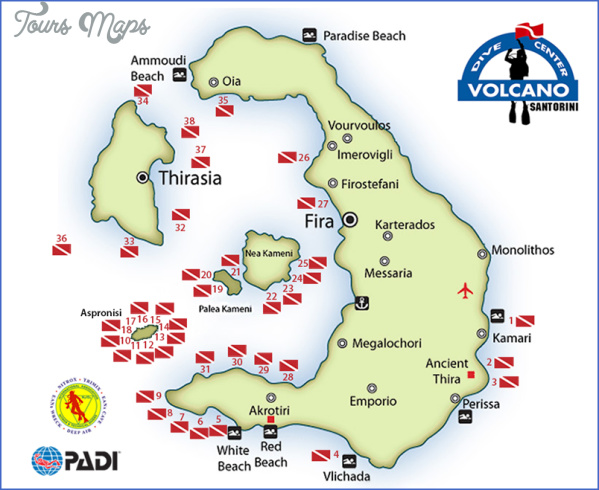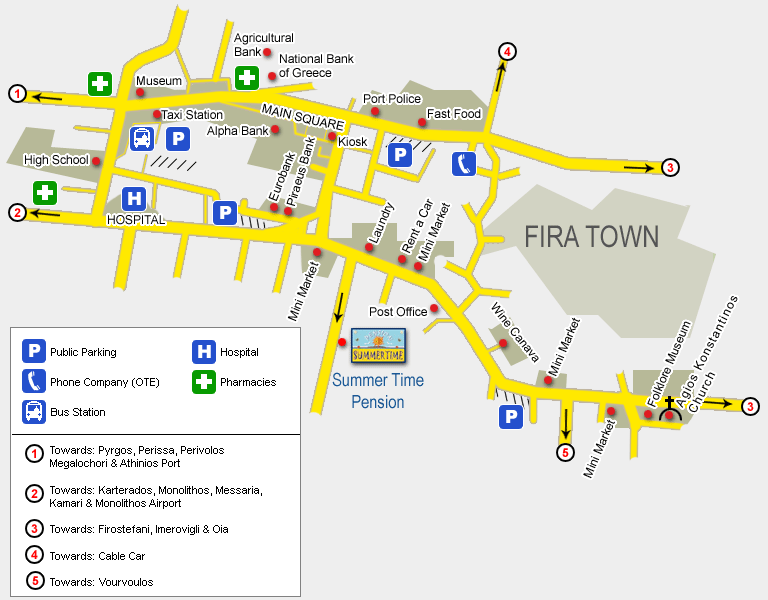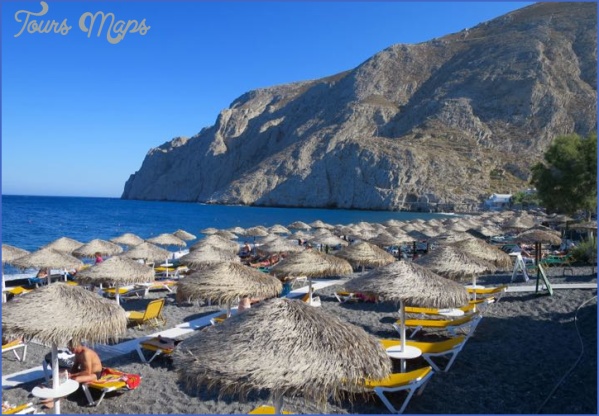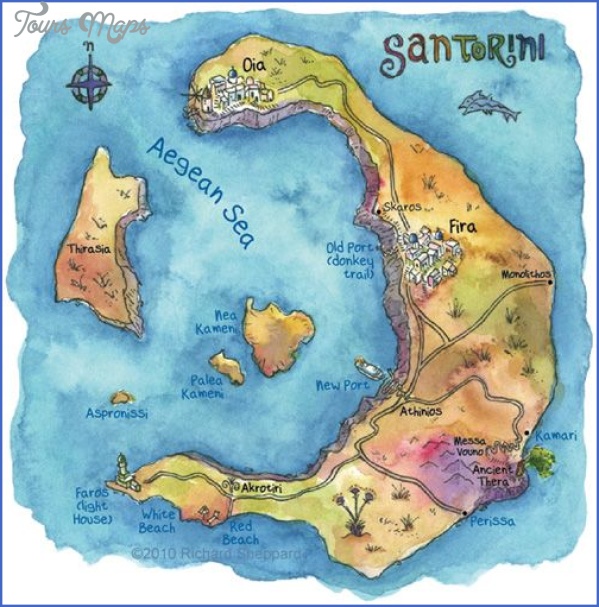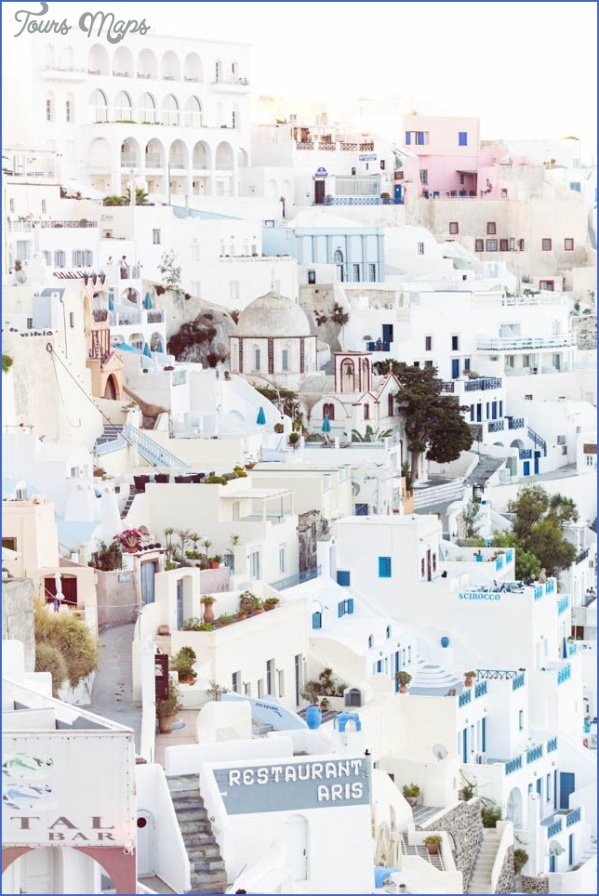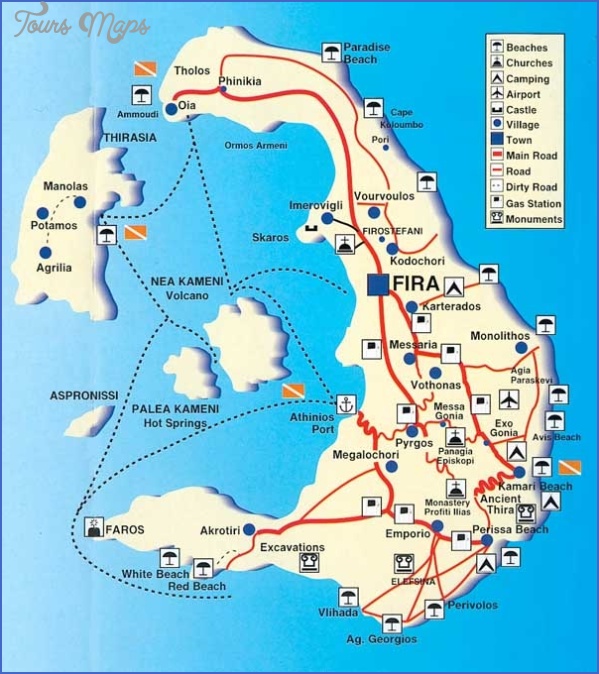GUIDE TO THE ARCHAEOLOGICAL SITE AT AKROTIRI
The excavations conducted at Akrotiri to date have laid bare only part of the prehistoric town, which seems to have extended much further both to the east and to the west than is obvious today.
The modern visitor enters the site from the south and soon reaches the only street of the Akrotiri town to have been excavated. Along it as it runs from north to south through the town stand imposing groups of buildings, and the archaeologists have named it the Street of the Telchines: the Telchines were mythical demons (fire spirits) who were capable of destroying the earth with a special sulphurous liquid (cf. lava), but were also outstanding workers of metal.
The first building to the left of the entrance is Xesti 3, an impressive structure with at least three storeys and fourteen rooms on each floor. The street side of the building was faced with hewn stone. A staircase led up to the first floor, where many of the rooms were adorned with frescos such as that showing women picking crocuses. In the north-east corner was a ‘purification basin’, the only one of its kind found at Akrotiri. These were characteristic features of Minoan architecture, found in all the palaces on Crete. They were underground areas where those engaged in rites of purification or initiation were sprinkled with water. In the south part of the building many scattered stone tools were found. If we accept the theory that after the earthquake teams of workmen remained behind on the island to repair the damaged buildings, then it is possible that these tools belonged to them.
Santorini Attractions Map Photo Gallery
As we step on to the Street of the Telchines and follow it to the north, the first building we see on our left is building C. Its entrance is right on the Street of the Telchines. Many stone tools were found here, too, and some of them were notably large. Directly opposite building C is the two-storey building B. On the ground floor, in room Bl, a series of large storage jars were found, resting in special niches. Next to them were scattered cone-shaped funnels used for emptying the liquids. In room B2, on the same floor, there were numerous cooking vessels and some cone-shaped cups. The walls of the room above Bl were decorated with the frescos of the Boy Boxers and the Antelopes, while the Blue Monkey fresco was found in the room above B6.
Further along the road is the Mill square. It is bordered to the south and east by building B and on the north by complex D, and takes its name from the flour mill that was found in room D15, directly opposite room Bl. The mill itself and the jar in which the ground flour was collected can still be seen. Complex D has four entrances. One of them, the western one, was protected by a porch. Room D2, in the east wing of complex D, was decorated with the Lily or Spring fresco. Traces of a bed and a footstool were discovered in the same room; a reconstruction of the bed is to be seen in the Archaeological Museum in Athens.
Maybe You Like Them Too
- Top 10 Islands You Can Buy
- Top 10 Underrated Asian Cities 2023
- Top 10 Reasons Upsizing Will Be a Huge Travel Trend
- Top 10 Scuba Diving Destinations
- World’s 10 Best Places To Visit

